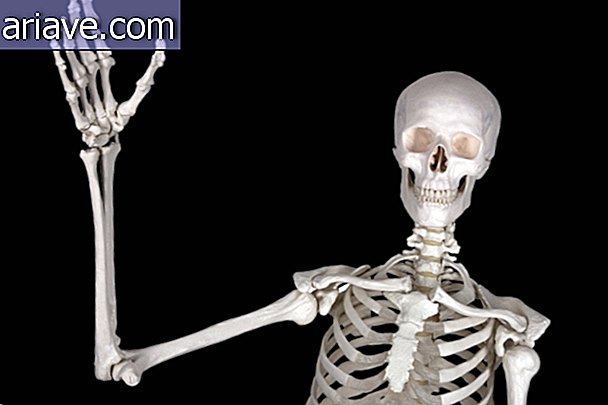9 Curious Mega Facts About Our Circulatory System
Many people only pay attention to the circulatory system when something bad starts to happen to their health due to heart and blood vessel problems. The truth is that we need to take care of it with the same attention that we give to the whole body, since heart disease is the most killer today.
For those not yet aware, the main function of this system is the transport of blood, nutrients, gases and hormones to each corner, meeting the needs of all cells, maintaining the proper temperature, balancing the body's pH and fighting various types of existing diseases, including cancer.
But as you all know, our body is a very complex machine, and just as other systems have their own peculiarities, it also hides very interesting facts that even some doctors are unaware of. We separated 9 curiosities so you never see the circulatory system the same way.
Don't live in another world

Because of gravity, blood tends to accumulate mainly in a person's legs. However, in space there is no gravity, and the blood ends up in the chest and head. Astronauts complain a lot about stuffy nose, headaches and swollen faces, which damages the circulatory system.
The heart also expands so that it can handle the increased blood flow in the organ region, and the brain interprets it as a sudden change of fluids. The body responds with different processes to get rid of excess fluid, resulting in loss and overall reduction in the volume of blood that circulates throughout the body.
Dying of love

Do you know when you suffer a love disappointment or lose a loved one and think you will die of pain? A lot of people will tell you that it doesn't kill, but the truth is that it can almost get in the way! An emotionally stressful event, physical separation or irreparable loss can "break" your heart and make you really sick.
When things like this happen, the myocardium (heart muscle) eventually weakens and you may have symptoms very similar to those of a heart attack - chest pain, shortness of breath and arm pain - leaving you bed and even hospitalized. This condition is called cardiomyopathy and is also known as "broken heart syndrome".
Beating off the chest

Some people have had the experience of witnessing a heart beating outside the body. This can be easily seen in videos, documentaries and even the famous feature film "Indiana Jones and the Temple of Doom" when one man tears another's heart and the organ continues to pulse even in the open air.
This is not science fiction and this fact really happens. And do you know the reason for this? The heart does not need third-party electrical impulses: it has its own, which are powered by oxygen. So as long as the organ continues to receive the element, it will continue to beat even apart from the body.
Longer than you think

When you look at a person's body (or your own), you have no idea how big the circulatory system is inside. Let's start by saying that the circumference of the earth is about 40, 000 kilometers. Would you believe us if we told you that there are about 100, 000 kilometers of veins, arteries and capillaries inside us?
That's right! If we removed all one person's blood vessels, we could go around the planet approximately 2.5 times. And while capillaries are the smallest blood tubes, they make up about 80% of all this length. Yes, that's a lot, even for an adult person.
Medical error for 1, 500 years

For many years, doctors had an incorrect model of the circulatory system. This was because science was not yet so advanced and it was not possible to be absolutely sure what was being said. The Greek doctor and philosopher Galen of Pergamum stated that the blood system had two types: venous (dark red) and arterial (bright red).
He also said that the circulatory system was composed of two ways of distributing blood (instead of one) and, amazingly, that it was the liver that produced venous blood. For Pergamos, the heart was a sucking (not pumping) organ. Only in 1600 did the English physician William Henry correct this whole theory.
Blue blood doesn't exist in humans

Very clear people can look at the veins that appear throughout their body and imagine that their blood is blue, but it really doesn't exist (at least not in humans). Misleading vein staining results from the way light penetrates the skin, is absorbed and returns to our eyes.
The blood that flows through the arteries and capillaries is bright red and becomes darker when it returns to the heart through the veins. However, some mollusks and arthropods do not have hemoglobin (which gives the color red blood), being replaced by the protein hemocyanin, making your blood turn dark blue when oxygenated.
The larger the body, the lower the heart rate.

That's exactly what you read in the title: The bigger the body, the lower the heart rate. The larger the being, the slower your heart beats at rest. For example, an adult has a heart rate of about 80 per minute when resting.
And this is not only among humans. A sheep, for example, has the same rate as humans. The heart of a blue whale is huge, the size of a car, and only beats 5 times per minute. Already a viper has about a thousand beats every 60 seconds.
In the name of medical advances

Do you know what a catheterization is? This is a medical procedure that inserts a catheter into a patient's blood vessel and passes it to the heart. It serves to check the blood flow in the coronary arteries, make the diagnosis and more. It is widely used today, but do you know how it came about?
German doctor Dr. Werner Forssman started the process in 1929 and believe me, he performed it himself! The doctor had the help of a nurse, applied local anesthesia and inserted the catheter into his own arm. Then he used a piece of equipment that helped guide the two-inch object to his heart. Let there be love for science!
Special attention to red blood cells

Did you know that red blood cells carry much more oxygen to the body than other structures, so they should receive special attention? And this has a very interesting reason: unlike other cells, they don't have a nucleus: and without this internal structure, there's much more room for this much-needed transport.
Red blood cells are renewed by the bone marrow as they have a shelf life. Because of their different nature from other cells, they circulate throughout our body for about 120 days, dying of aging or damage. Therefore, they need to be replaced immediately, our own body fulfills this function.











